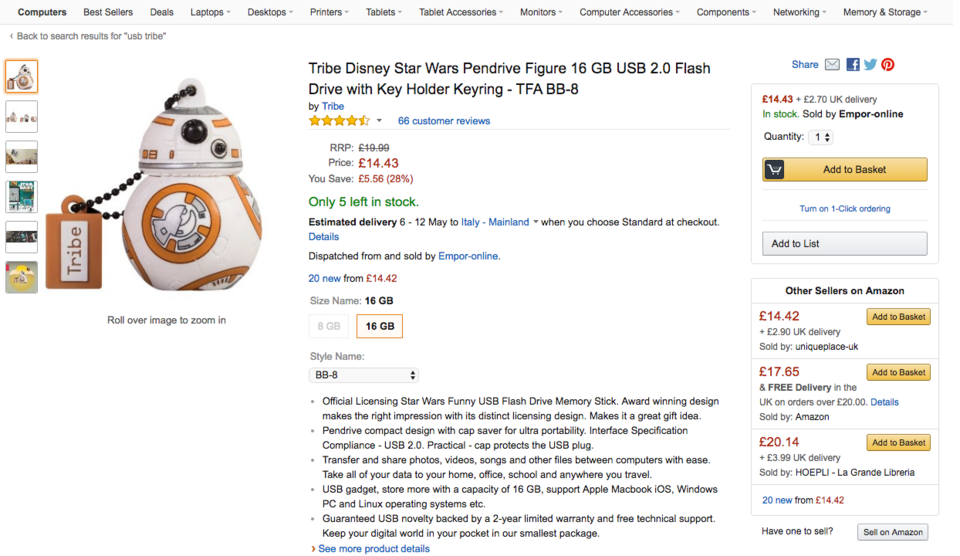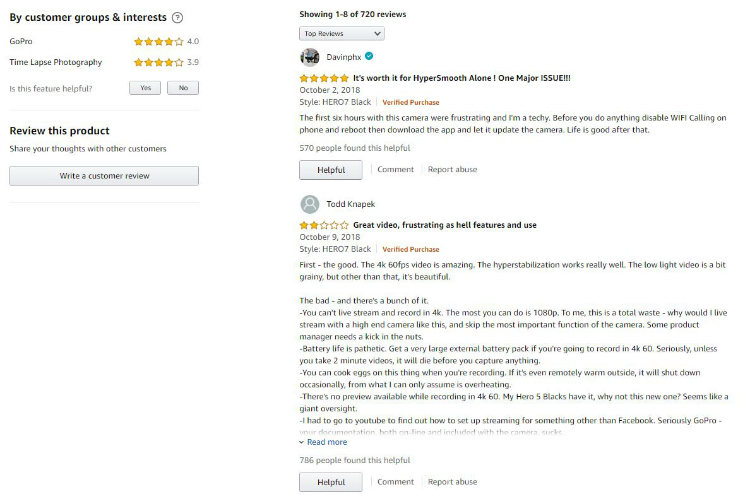Upstart entrepreneurs in today’s world have more choices than ever with respect to selling their products and services. While standard brick and mortar options are still a viable method, many are turning to online platforms and marketplaces as a better solution. Given the potential for greater reach and lower start-up costs, selling products online simply makes good business sense for many.

While some businesses and brands decide to open their own websites and market them to customers, many have chosen to showcase their products on dedicated, existing marketplaces. There are many from which to choose, with entrepreneurs even able to sell products on websites such as Wal-Mart. However, the biggest hub for online sales is undoubtedly Amazon.
The Amazon seller experience is multi-faceted and not necessarily the most intuitive to first-time sellers. Knowing what to do – and what not to do – can make all the difference in long-term viability and profitability. To guide first-time Amazon Affiliate Marketing sellers, let’s look at five crucial mistakes to avoid when using this renowned marketplace.
Leaving Product Details Blank
Amazon is a massive platform with millions upon millions of products. While one quick search via Google for the product(s) you’re wishing to buy will almost certainly yield at least some results from Amazon, the chances that shoppers will find your product when searching on the platform is initially quite small. As such, ensuring that your products resonate with as many relevant searches as possible is crucial.

Amazon provides dozens of product data details for sellers to fill out. While those reselling products that are already being sold by others on the platform might enjoy the benefit of having most of these fields already auto-completed, when selling custom products, you should take every step to ensure all product detail fields are filled with information.
Leaving one or more relevant product details blank could cost you a plethora of customers over time, as your competitors may be maximizing these fields in their own listings and reaching users more effectively. While not every field will be relevant to your exact product(s), do not become complacent when listing and describing your products.
Failing to Drive Off-Site Traffic
Amazon is an incredible platform that provides plenty of exposure for many e-commerce businesses seeking to reach new audiences. With that being said, it shouldn’t be assumed that every prospective customer will inevitably find you. In fact, many people who shop on Amazon first turn to search engines to find viable shopping options, only arriving at Amazon once they’ve clicked one or more links.

As such, it is imperative to drive off-site traffic to your Amazon listings via a variety of marketing tactics. PPC campaigns, for instance, can be used to target specific search engine results pages with ads; if you have an agency set up your PPC campaigns, the outcome of these campaigns will be far superior. Likewise, brands with existing online presences may decide to use social media and even their own websites to redirect customers to Amazon, as one way to build customer transactions early on and signal to Amazon that people are buying your products (and that your brand is trustworthy).
Being Lax with Shipping
Amazon has become so popular for several reasons, but one is very hard to ignore: its fast shipping times. While products shipped via Amazon or sold under its Prime membership may come with guarantees, sellers have a bit more flexibility. However, when shoppers have the choice to buy from you or from someone else who ships faster, who do you think they’re going to pick?

Even if your product isn’t Prime-eligible or fulfilled by Amazon, shoppers are willing to purchase from you – assuming your shipping times are reasonable. The simple reality is that sellers who either fail to offer fast shipping times or are lax about shipping out products on time cannot compete with other sellers. Additionally, Amazon keeps a close eye on fulfillment times and will downgrade your visibility if you are not living up to its standards.
Self-Promotion
Amazon is a phenomenally large and powerful marketplace – and one that you want to retain access to as a seller. Like most major marketplaces, Amazon does not allow the kind of self-promotion that you might find on smaller marketplaces or in advertisements. Amazon ensures that all listings are standardized in the ways that matter, from product descriptions to photo and video placement. This helps even out competition among sellers but also ensures Amazon doesn’t lose business to off-site sources.

As such, Amazon does not allow shoppers to promote their brands, insert their websites’ URLs into product descriptions or watermark images with branding that would allow customers to purchase elsewhere. Sellers who are caught doing this can be barred from the platform, which will more than cancel out any potential cost savings by selling to a few customers via your business website.
Gaming the Review System
It is a simple fact that Amazon tends to prioritize sellers who have earned a heaping of positive reviews on their products. While it can be difficult as a new seller to break through and begin gaining traction in all of your desired audiences, the last thing you want to do is begin trying to abuse this system.
Amazon customer reviews affect sellers’ customer metrics scores, which are determined by a variety of stats. While it is possible for individuals to leave reviews on your products without actually purchasing them, these will be easily noticed. Since every review left by an actual customer is branded with the “verified seller” indicator, shoppers will be able to tell just how many reviews are legitimate – as will Amazon.

Earning reviews for Amazon products that aren’t verified isn’t exactly uncommon, but a sudden surge in unverified reviews will raise red flags with Amazon. As such, attempting to buy or otherwise generate positive reviews for your brand is not worth the risk – and can lead to your account being banned from the marketplace.
Without a variety of guidelines and tips early on, you could easily make one or more mistakes that could hamper – or outright end – your Amazon selling experience. By avoiding these five crucial mistakes, your Amazon selling experience will be more fruitful and viable for months and years to come.


